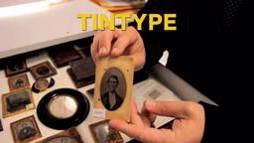FOR IMMEDIATE RELEASE | December 10, 2012
The chemistry of early photographs: New American Chemical Society video
WASHINGTON, Dec. 10, 2012 — The chemistry of early photography comes under the lens in a new episode of Bytesize Science, the American Chemical Society (ACS) award-winning video series. Produced by the ACS Office of Public Affairs, it is available at www.BytesizeScience.com.
The video, which features Art Kaplan, of the Getty Conservation Institute, explains that the history of photography is rich with chemical innovations and insights. Early photographers came up with hundreds of different processes to develop images in unique and often beautiful ways. Kaplan describes the development processes and distinguishing features of several types of photographs, including daguerreotypes, ambrotypes and tintypes.
Media Contact
Michael Bernstein
202-872-6042
m_bernstein@acs.org
Michael Woods
202-872-6293
m_woods@acs.org
Kaplan studies different styles of photographs, and the materials and the chemistry that gave life to still life in the early days of photography. To do so, he has loaded his office drawers with photographic samples and scientific instruments. Early photographs can be difficult to conserve, since each type of photograph requires a different preservation technique, he notes. And while two photos could look very similar, they may differ chemically in dramatic ways.
For more entertaining, informative science videos and podcasts from the ACS Office of Public Affairs, view Prized Science, Spellbound, Science Elements and Global Challenges/Chemistry Solutions.
To automatically receive news releases from the American Chemical Society contact newsroom@acs.org.
###

and many other different types of photographs.

